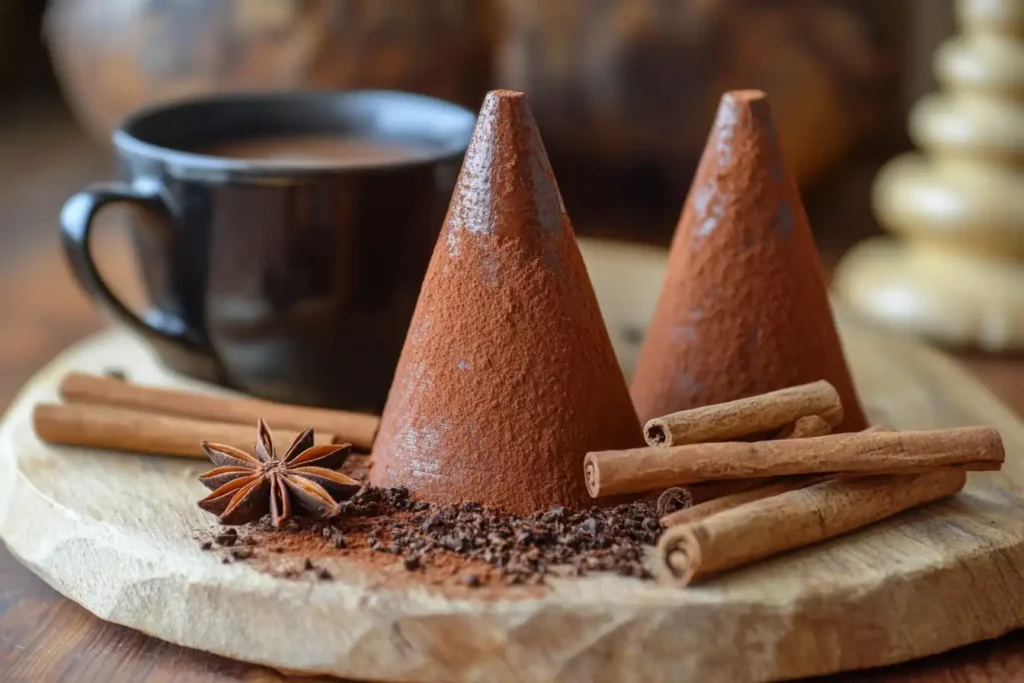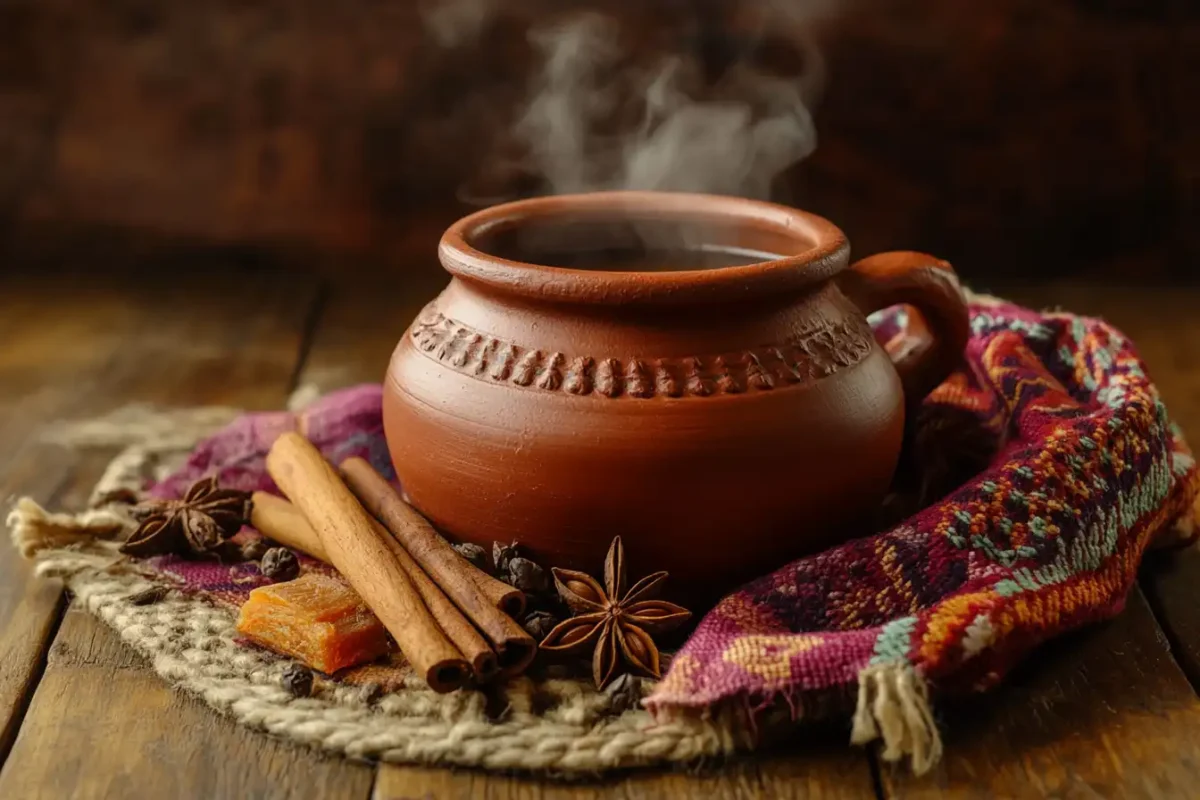Café de olla is more than just a drink; it’s a taste of Mexican tradition served in a warm, aromatic cup. This beloved beverage, prepared with coffee, cinnamon, and piloncillo (a natural sweetener), offers a delightful mix of flavors and a potential array of health benefits. But is café de olla healthy? In this article, we’ll dive deep into its origins, nutritional benefits, health risks, and even modern variations. Whether you’re a seasoned coffee enthusiast or just curious about this traditional brew, read on to discover everything you need to know.
Introduction to Café de Olla
What is Café de Olla?
Café de olla, literally translated as “coffee from the pot,” is a traditional Mexican coffee drink with roots that stretch back to pre-colonial times. Originally crafted in clay pots, this beverage was a favorite of early Mexican communities, prized for its earthy flavor and energizing properties. According to culinary historians, even Moctezuma enjoyed a version of café de olla, made with cacao, corn, and honey.
Today, café de olla remains a staple in Mexican households, often served during special occasions or cold mornings. Its unique flavor comes from a combination of ground coffee, cinnamon sticks, and piloncillo, which is unrefined cane sugar. Many families add spices like clove or star anise to create their signature blend.
Ingredients of Café de Olla
The magic of café de olla lies in its simplicity and versatility. While the essential ingredients include coffee, cinnamon, and piloncillo, variations abound. Some recipes incorporate orange or lime peels, while others mix in vanilla or even a splash of liquor. Traditionally, the coffee is brewed in a clay pot, enhancing the drink’s distinct, earthy aroma.
This humble yet flavorful beverage is not just about taste; its ingredients bring several nutritional benefits to the table. From the antioxidants in coffee and cinnamon to the minerals in piloncillo, each component contributes to café de Olla’s reputation as a comforting and potentially health-boosting drink.
Stay tuned as we unravel the science behind its ingredients and explore how this traditional brew might just be a healthier option than your regular cup of joe!
Nutritional Composition of Café de Olla

Coffee’s Nutritional Benefits
Café de olla’s primary ingredient—coffee—is a nutritional powerhouse. Each cup contains essential vitamins like riboflavin (B2), pantothenic acid (B5), and niacin (B3), as well as minerals such as manganese and potassium. These nutrients are known to support energy production, improve skin health, and aid in the body’s metabolic functions.
Coffee is also rich in antioxidants, which play a crucial role in combating free radicals and reducing oxidative stress. Studies show that moderate coffee consumption can contribute to a lower risk of chronic illnesses, including cardiovascular diseases and some types of cancer. With is café de Olla healthy as a guiding question, it’s evident that coffee’s natural composition offers significant benefits when consumed responsibly.
Piloncillo vs. Refined Sugar
Piloncillo, the unrefined sugar used in café de olla, is a standout compared to regular refined sugar. This traditional sweetener retains nutrients from sugarcane, including magnesium, zinc, and phosphorus. These minerals support bone health, boost the immune system, and promote muscle function.
Unlike refined sugar, which can spike blood glucose levels and contribute to weight gain, piloncillo has a lower glycemic index. While it should still be consumed in moderation, piloncillo offers a slightly healthier alternative for sweetening beverages like café de olla.
The Role of Spices in Café de Olla
The spices in café de olla—particularly cinnamon, clove, and star anise—add more than just flavor. Cinnamon, for instance, has been praised for its ability to regulate blood sugar levels, making it a useful addition for individuals with type 2 diabetes. It also provides a rich source of antioxidants.
Similarly, clove and anise bring antimicrobial properties to the table. They can help fight harmful bacteria, improve digestion, and even boost overall gut health. The combination of these natural spices with coffee and piloncillo makes café de olla not just a comforting drink, but also a nutrient-rich choice.
Health Benefits of Café de Olla
Benefits of Moderate Coffee Consumption
When exploring café de Olla Healthy, one cannot overlook the extensive research on coffee. Moderate consumption—defined as three to four cups daily—has been linked to reduced risks of serious health issues, including cardiovascular diseases (heart attacks and strokes), type 2 diabetes, and neurodegenerative disorders like Parkinson’s and Alzheimer’s diseases.
Coffee’s antioxidants play a critical role in neutralizing inflammation and supporting cellular repair. Furthermore, the beverage provides a natural energy boost, thanks to its caffeine content, which improves focus and reduces fatigue.
Role of Cinnamon in Café de Olla
Cinnamon is a star player in café de Olla, offering a wealth of health benefits. Known for its anti-inflammatory properties, it aids in reducing inflammation-related ailments like arthritis. Additionally, its high antioxidant levels help combat premature aging and oxidative stress.
For individuals managing blood sugar issues, cinnamon is especially valuable. Studies suggest that it enhances insulin sensitivity, which can help regulate glucose levels. By incorporating this spice, café de Olla transforms from a simple beverage into a potentially therapeutic option for managing diabetes.
Other Health-Boosting Ingredients
Café de olla’s lesser-known ingredients, such as clove and star anise, bring their own benefits to the mix. Clove is celebrated for its antimicrobial potential, effectively fighting harmful bacteria like E. coli. Star anise, on the other hand, contains compounds that promote digestive health and alleviate symptoms of bloating and indigestion.
Additionally, piloncillo—though a sweetener—offers trace nutrients that support overall health. Its presence ensures that your cup of café de olla is not only indulgent but also somewhat nourishing.
Adding internal links: If you’re curious about other traditional recipes that balance flavor and health, explore this detailed guide on Café de Olla.
Potential Health Risks and Considerations
Caffeine Sensitivity and Overconsumption
While café de Olla offers many benefits, overindulging can lead to complications, particularly due to its caffeine content. For individuals sensitive to caffeine, consuming too much can result in symptoms like restlessness, insomnia, or even an increased heart rate. Moderation is key to enjoying this drink without adverse effects.
It’s worth noting that café de Olla’s flavor profile often encourages larger servings. However, maintaining a balance is crucial, especially for those who experience side effects from caffeine. To explore alternatives, you might try recipes that use decaffeinated coffee for a gentler experience.
Impact of Sweeteners on Health
Although piloncillo is a healthier alternative to refined sugar, it is still a form of sugar. Individuals with conditions like diabetes or metabolic syndrome should monitor their intake closely. High consumption could lead to spikes in blood sugar, offsetting some of the potential benefits of the other ingredients.
For those asking if café de olla is healthy for daily consumption, it depends largely on the portion size and dietary needs. Opting for a smaller serving or substituting piloncillo with low-glycemic sweeteners like stevia can make this traditional drink more accessible for everyone.
Allergies and Intolerances
Some ingredients in café de olla, such as cinnamon, clove, or star anise, may trigger allergic reactions in sensitive individuals. Symptoms can range from mild irritation to more severe responses, such as difficulty breathing or skin rashes.
Moreover, if milk or cream is added to enhance flavor, those who are lactose intolerant might experience digestive discomfort. For a dairy-free version, consider plant-based alternatives like almond or oat milk.
Variations of Café de Olla and Their Health Impacts
Regional Recipe Differences
Café de Olla is as diverse as the regions it hails from. In some areas, orange or lime peels are added for a citrus twist, while others incorporate vanilla or liquor for a more robust flavor. These variations not only enhance the taste but may also alter the nutritional value. Citrus additions, for instance, introduce extra vitamin C, while liquors add calories without substantial nutritional benefit.
For those asking if café de olla is healthy in these variations, the answer often lies in the choice of ingredients. Keeping it simple with spices and minimal sweeteners tends to retain its health benefits.
Modern Adaptations
As dietary preferences evolve, so too has café de olla. Modern versions cater to health-conscious consumers with sugar-free options and vegan-friendly adaptations. Substituting piloncillo with natural sweeteners like monk fruit or agave syrup reduces the sugar content without compromising flavor.
Additionally, plant-based milks like soy or coconut provide creamy alternatives for those avoiding dairy. These adjustments make café de olla accessible to a wider audience while preserving its essence as a comforting, spiced beverage.
Suggested Reading
For a closer look at how traditional recipes like this can be adapted for modern diets, check out Café de Olla – A Traditional Mexican Coffee Recipe.
FAQs About Café de Olla

Is Café de Olla Better Than Regular Coffee?
When considering is café de olla healthy compared to regular coffee, the difference lies in the added ingredients. Regular coffee provides a straightforward dose of caffeine and antioxidants. Café de olla, however, incorporates spices like cinnamon and clove, which boost its health benefits with anti-inflammatory and antimicrobial properties.
The inclusion of piloncillo adds natural sweetness and trace nutrients, but it also increases the sugar content. For those looking to cut back on sugar, regular black coffee may be the better option. However, the warming spices in café de olla can make it a healthier choice for those seeking added digestive and metabolic benefits.
Can Café de Olla Help with Weight Loss?
While café de olla isn’t a weight-loss drink, its ingredients might support weight management when consumed wisely. Cinnamon, for example, is known to regulate blood sugar and may help control cravings. Additionally, coffee’s caffeine content can boost metabolism, aiding calorie burn.
The key to making café de olla a weight-friendly option is to limit added sweeteners like piloncillo. A sugar-free version with spices intact can be an excellent way to enjoy this traditional drink without derailing your dietary goals.
How Often Can You Drink Café de Olla?
Moderation is essential for reaping the benefits of café de olla without overloading on caffeine or sugar. Most experts suggest limiting coffee intake to three to four cups per day. However, if your café de olla recipe includes significant sweeteners, one or two smaller servings are ideal.
Conclusion and Recommendations
Summary of Health Impacts
Café de olla is a delightful beverage that blends tradition with potential health benefits. From the antioxidants in coffee and cinnamon to the trace nutrients in piloncillo, its ingredients create a drink that nourishes and comforts. However, like any treat, moderation is key to ensuring it remains a healthy part of your routine.
Practical Tips for Healthier Preparation
To answer the question of whether de Olla was healthy, focus on making thoughtful adjustments. Opt for natural or sugar-free sweeteners, use spices liberally, and experiment with plant-based milk to reduce calories. Keep portions moderate, and savor the drink as part of a balanced diet.
Would you like suggestions for internal links or related recipes to further enrich the article? Let me know!
Conclusion: Is Café de Olla Healthy?
Café de Olla offers more than a coffee experience—it provides a connection to tradition and culture while delivering delightful flavors. The natural ingredients, such as coffee, cinnamon, and piloncillo, supply antioxidants and nutrients that contribute to a healthy lifestyle when consumed mindfully. This drink becomes even healthier with thoughtful preparation, like using less sugar or replacing piloncillo with natural sweeteners.
For those asking if café de olla is healthy for regular consumption, moderation, and ingredient choices are key. By controlling portions and customizing the recipe, you can enjoy its comforting essence without compromising your health goals.
Café de Olla not only nourishes the body but also enriches the spirit through its warm and aromatic character. Whether you savor it occasionally or adapt it to fit a balanced diet, its unique qualities make it a beverage worth celebrating.

